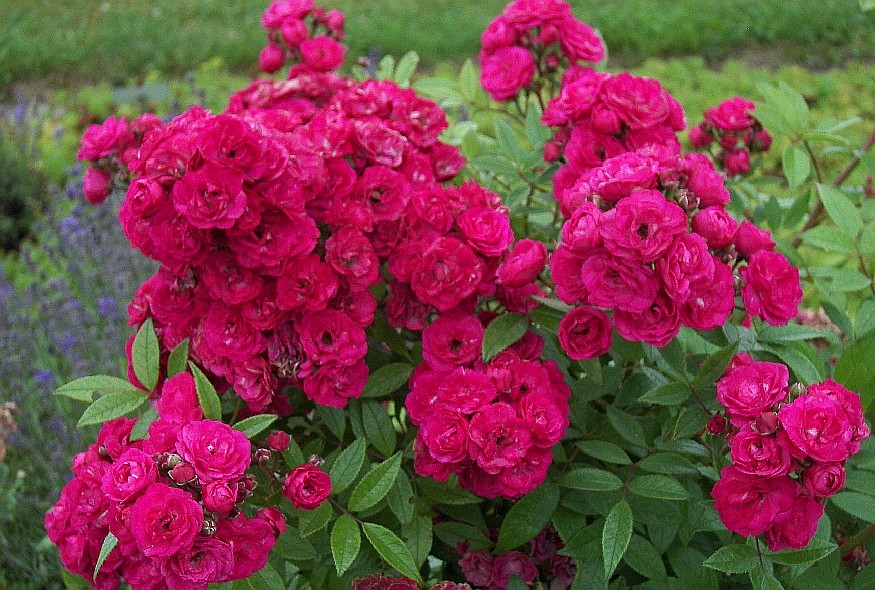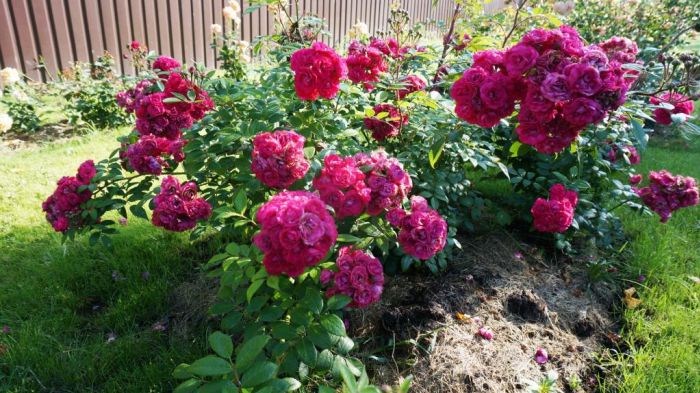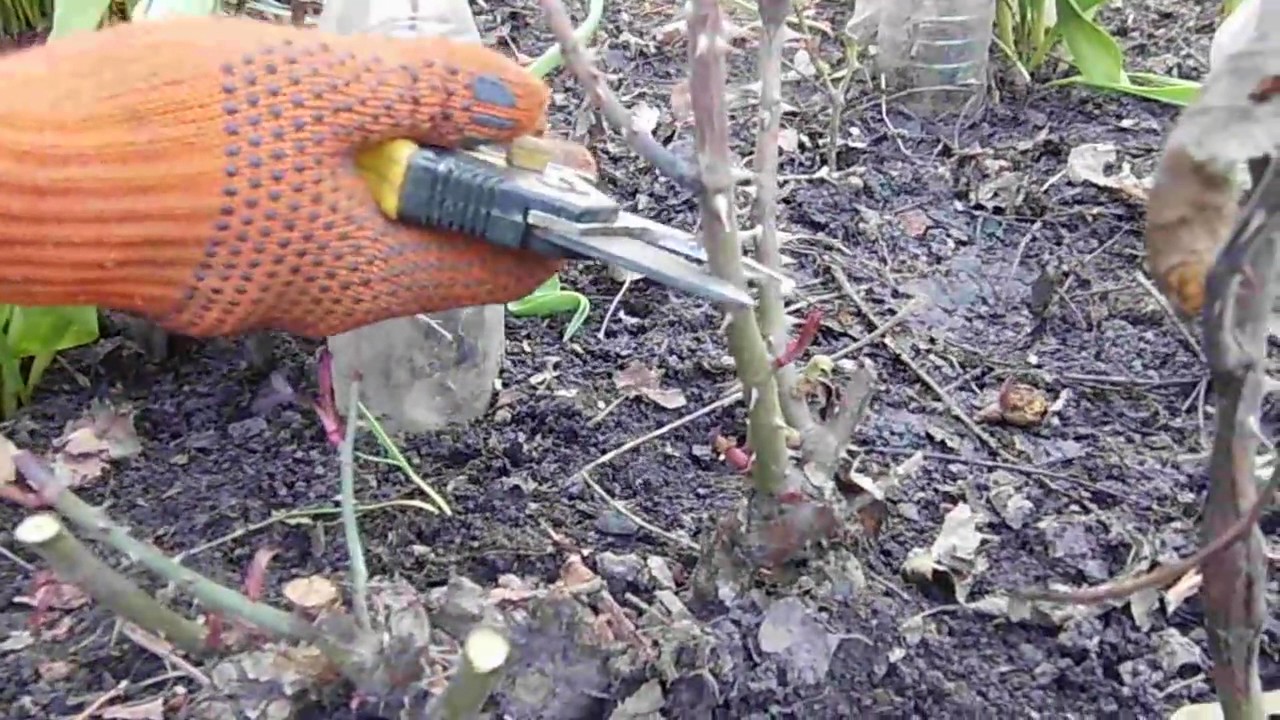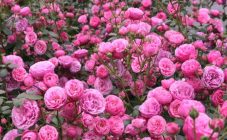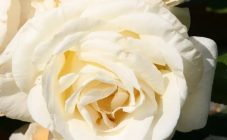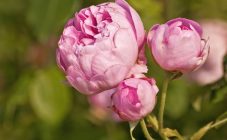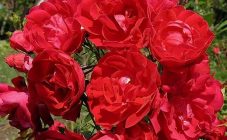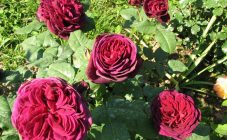Content:
Rosa Dinky is a musky hybrid that attracts attention with its bright magenta-pink flowers. Gardeners often use it for home gardens for decorative purposes.
Dinky musk rose was first bred in Belgium in 2002. It is frost-resistant. Leaves and buds are not susceptible to disease.
Description of the variety
The main characteristics of the rose:
- The bush is sprawling, round in shape, large, with long shoots. Reaches 120 centimeters in height and width.
- The leaves are large, glossy, bright green in color.
- Flowers - densely double, pink-purple color. The diameter of the flower is 4-5 cm. In one inflorescence there can be more than a hundred buds. They dissolve at the same time. They retain their color for a long time in the sun, do not deteriorate from rain. After cutting, the roses stand in the vase for a long time.
- Flowering is continuous, begins in June and ends before frost.
- The aroma is sweet and spicy.
- Frost resistance - high.
- Resistance to powdery mildew and black spot is high.
- Good survival rate.
- Loves partial shade.
Agricultural technology of cultivation
Landing place
Rose Dinky loves a bright place, if it is in the open sun all day, it will quickly fade. Also in the southern regions from UV rays, burns can form on the petals. A place where there will be partial shade after lunch is suitable.
If the planting site has good air circulation, then the rose will be less susceptible to diseases and pests.
You should not plant a flower in a low place, as a cold air stream is held there, and the plant will wither.
Soil for planting
The soil should be fertile, breathable, light and deep, which will provide access to the roots of nutrients. To improve heavy clay soils, peat, compost, sand, humus are added. Sandy soils are too light, infertile, and quickly heat up. Water in such land seeps very quickly. Add clay soil, humus or peat-manure compost, sod land.
You can increase the acidity by adding peat or manure. Ash and lime material are used for reduction. Due to the deep-rooted root system of the Dinky musky hybrid rose, the groundwater must lie at a depth of 1 meter, otherwise the plant will be sick with black spot.
Landing
They begin to plant in April-May in the northern regions and central Russia. In the autumn period, you need to have time to move the plant to the site so that it takes root before the cold weather. Seedlings with a closed root system are planted all summer.
Stages:
- Dig a hole 60 cm deep.
- Drainage is made at the bottom of the pit: small stones, gravel, crushed stone. The layer thickness is 10 centimeters.
- Rotted manure or compost is placed on top. The layer is about 10 centimeters.
- Further, garden soil is laid with the same thickness as a dome.
- Before planting, the seedling is placed in a growth stimulator - Heteroauxin for a day. The plant will take root faster and tolerate planting more easily.
- Very long and damaged roots are cut with pruning shears to normal wood.
- If the shrub has an open root system, it is easier to plant with a buddy. One person holds the seedling so that the root collar deepens by 3 cm, the other straightens parts of the plant in the hole, sprinkles it with earth and presses it a little.The root collar should not be visible on the surface. This will allow additional stems to grow.
- A seedling with an earthen lump is simply placed in the hole, sprinkled and tamped.
- Pour water under the root.
- If the soil has subsided, you need to add it.
- Mulch with peat.
Reproduction
The breeding process takes place by cuttings and layering.
After the rose has faded for the first time, cuttings are taken from the grown and strengthened bushes. They take root well and winter. An adult rose is bent to the ground for the period of cold weather. When propagated by seeds, the flower will not retain parental characteristics.
Care
It consists in systematic loosening, watering, fertilizing, removing weeds, preventive measures against pests.
Fertilizer
Feeding is different in different seasons. Nitrogen fertilizers are applied in the spring, phosphorus and potassium fertilizers in the summer.
Watering
The Hybrid is drought tolerant but still needs hydration, especially during dry and hot periods. The water should be warm. A bush requires up to 20 liters of water. In dry and warm weather, watering is required 2 times a week. At the end of summer, humidification becomes less and less frequent and stops by autumn. In the first year until August, early buds must be removed. By the end of summer, 2 flowers are left on the shoots to set fruits. The rose tolerates winter better this way and produces many buds next year.
Pruning
Pruning is done in the spring when the buds are swelling. It is necessary to distinguish, on last year or on current shoots, flowers will form. Also, the gardener needs to decide on the purpose of pruning: to form a trunk or abundant and early flowering.
Types of shoot removal:
- Strong (short cut). Leave 2-4 buds on the branches. It is used in spring for young seedlings after planting and for rejuvenating old bushes.
- Medium (moderate). 5-7 buds are left. Pruning promotes early flowering and high decorativeness.
- Weak (long). It is used in summer to remove faded buds.
Shelter for the winter
They begin to insulate the bush when the temperature drops more than -7 degrees. It is necessary to mulch with compost, humus or garden soil. Basically, they are insulated with spruce branches. It is placed between the roses and on top of the plant. Next, they make a frame, lay insulation. A film is pulled from above and air vents are left on the sides. In March - April they begin to air. In order for the rose to not start growing ahead of time, you need to remove the top film in advance.
Advantages and disadvantages
Positive sides:
- The rose is resistant to pests and diseases;
- The buds are bright, retain their color for a long time in the sun and tolerate rain well;
- Blooms continuously from June to October;
- High winter hardiness.
Negative sides:
- It is necessary to plant in a semi-dark place;
- Requires proper trimming.
The rose impresses with its unique beauty and smell; it has also gained great popularity among gardeners for its unpretentiousness and frost resistance.
